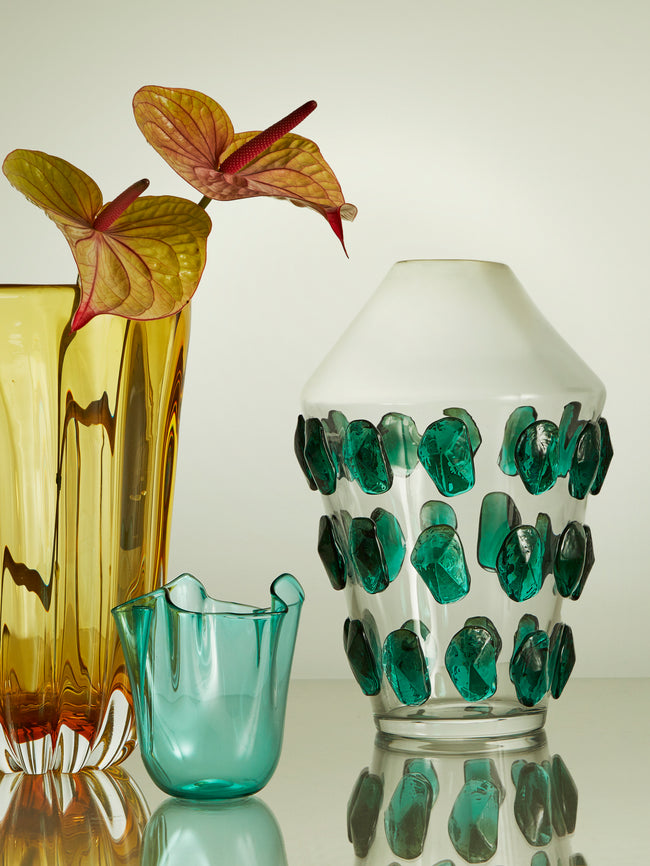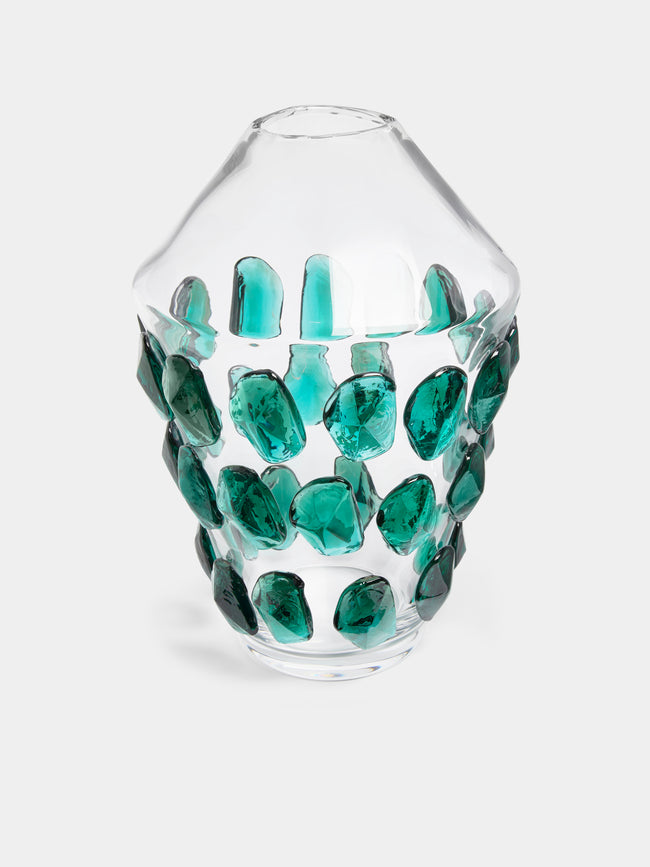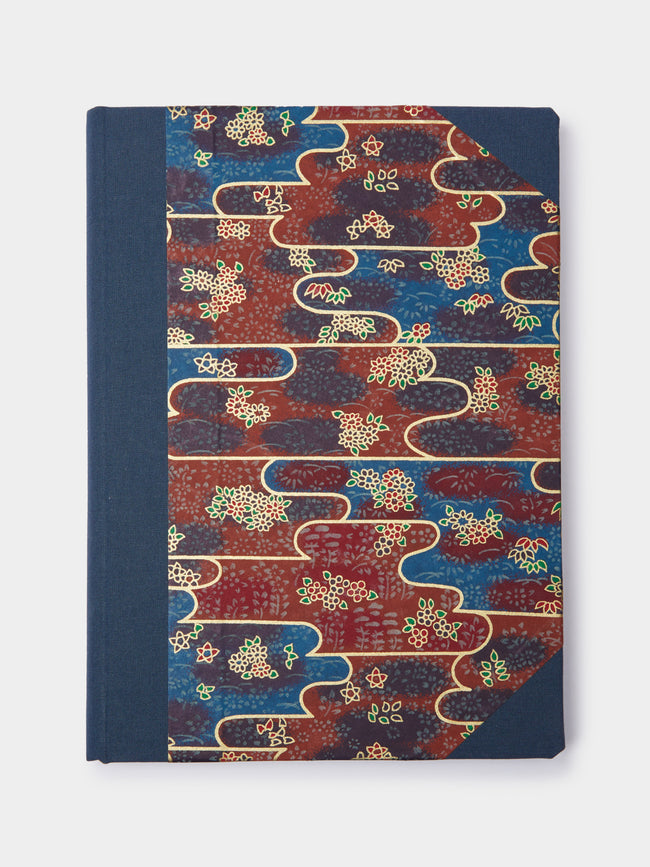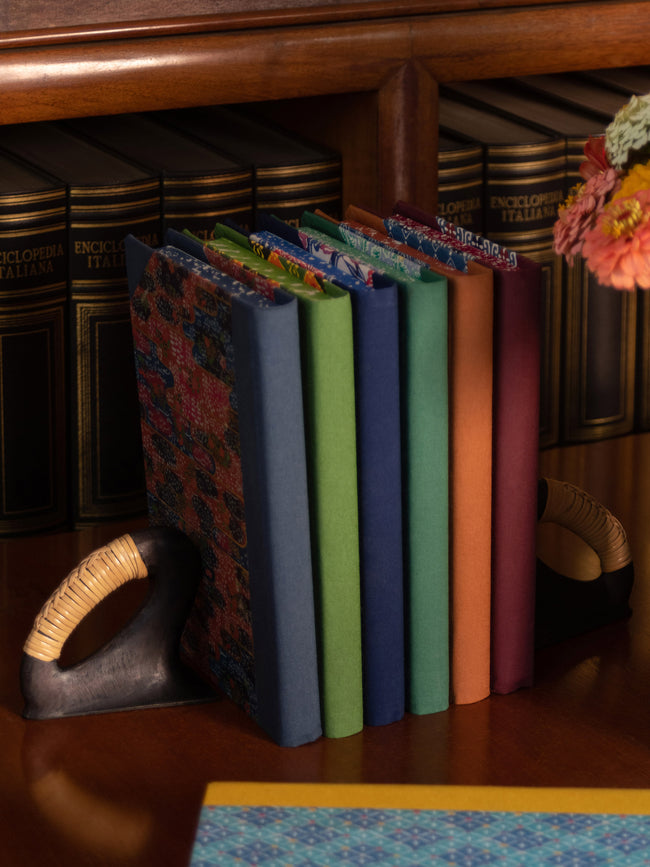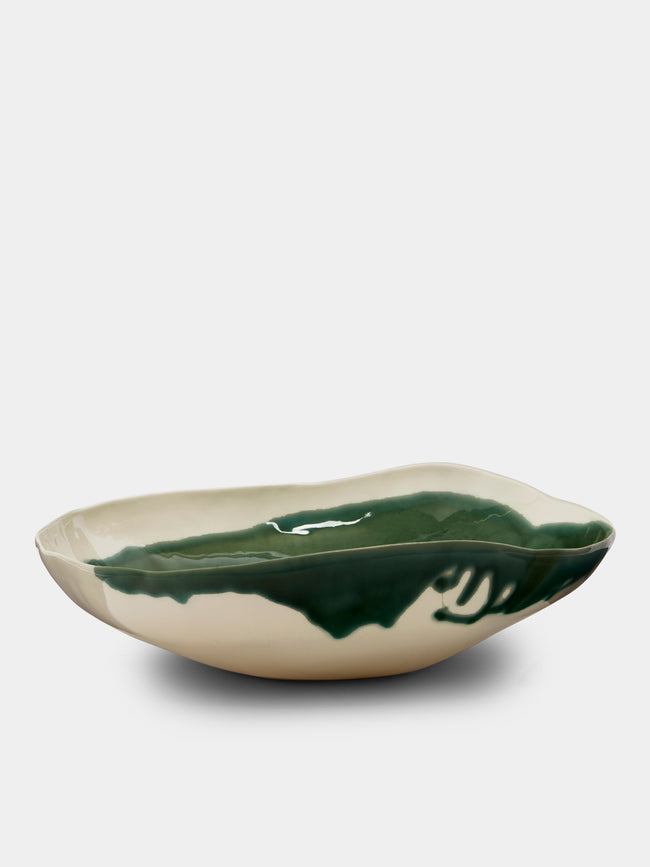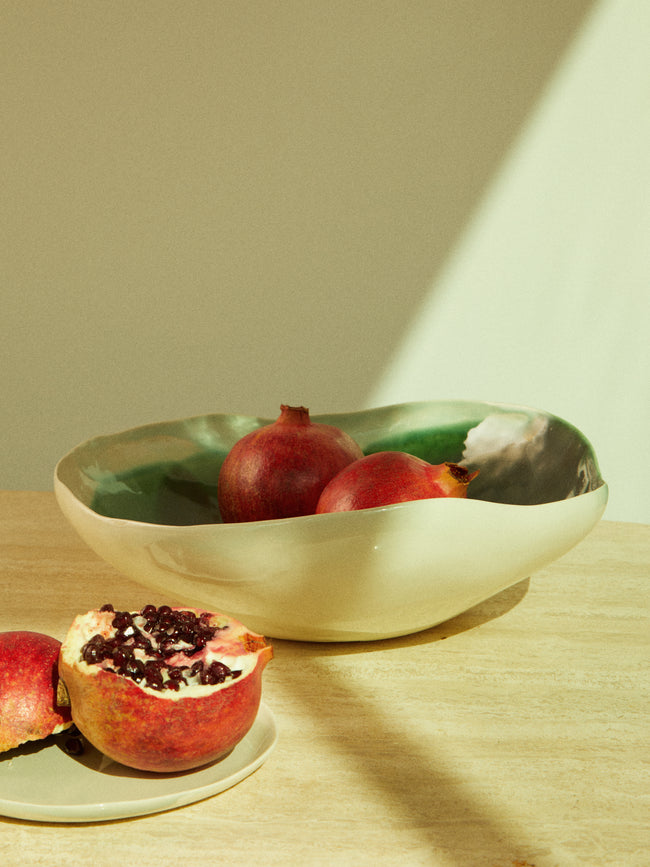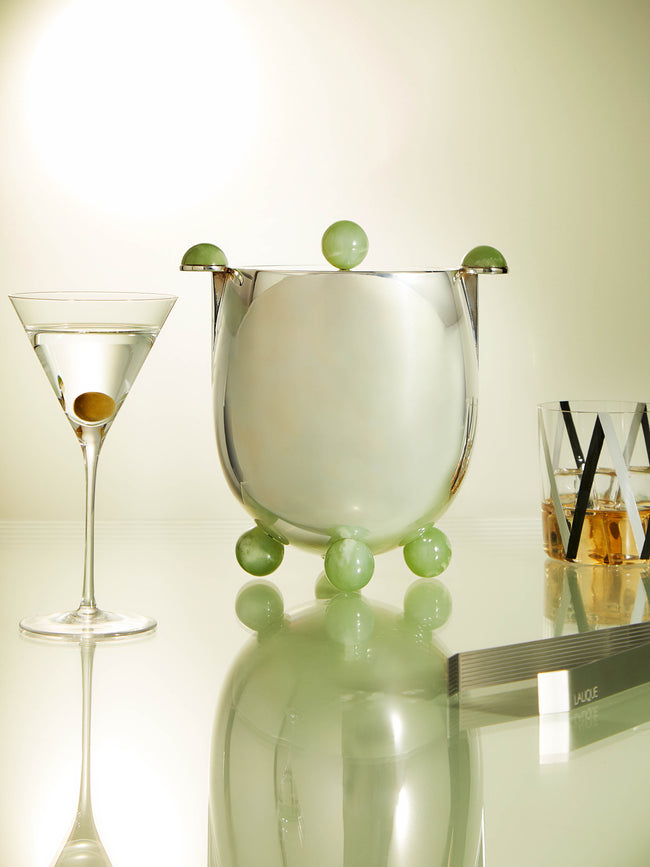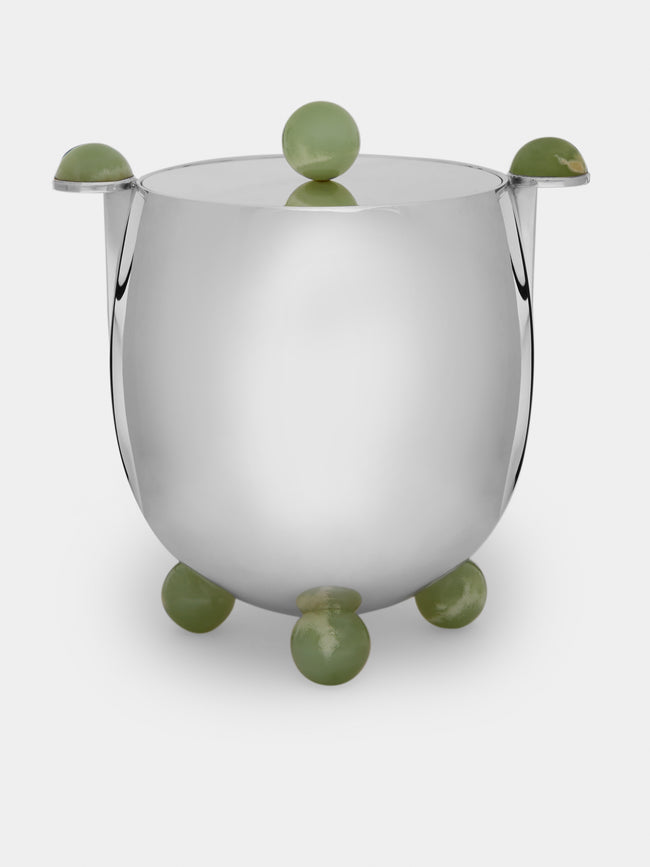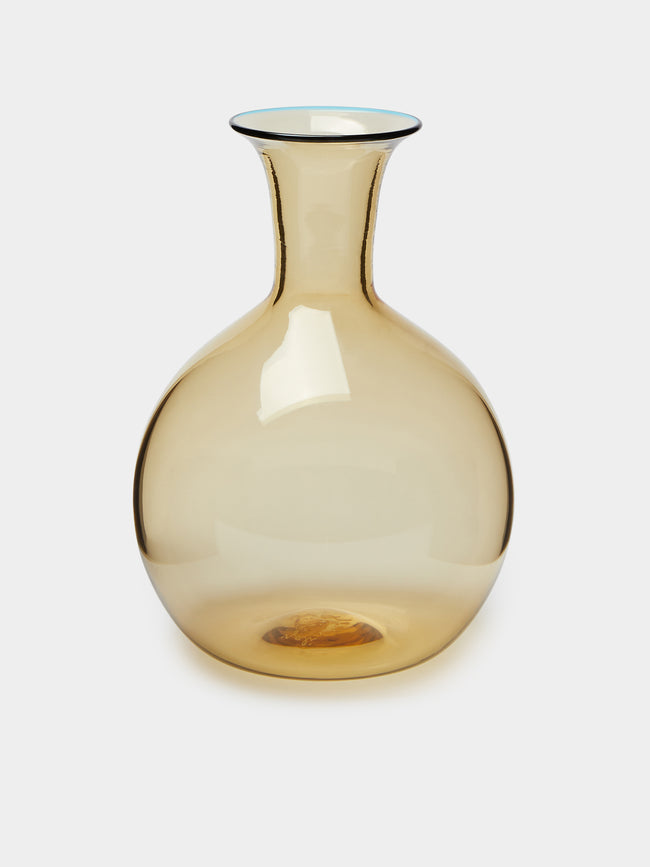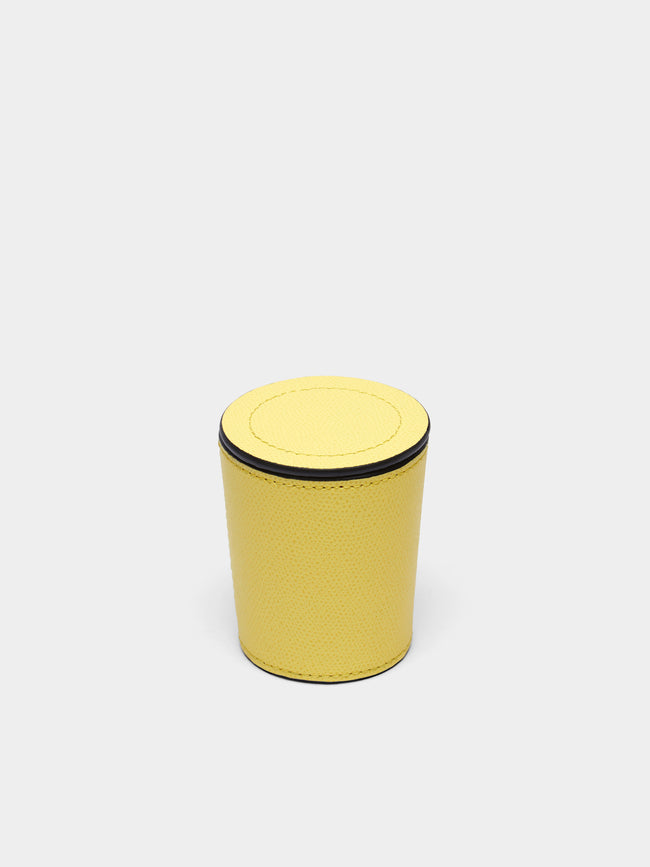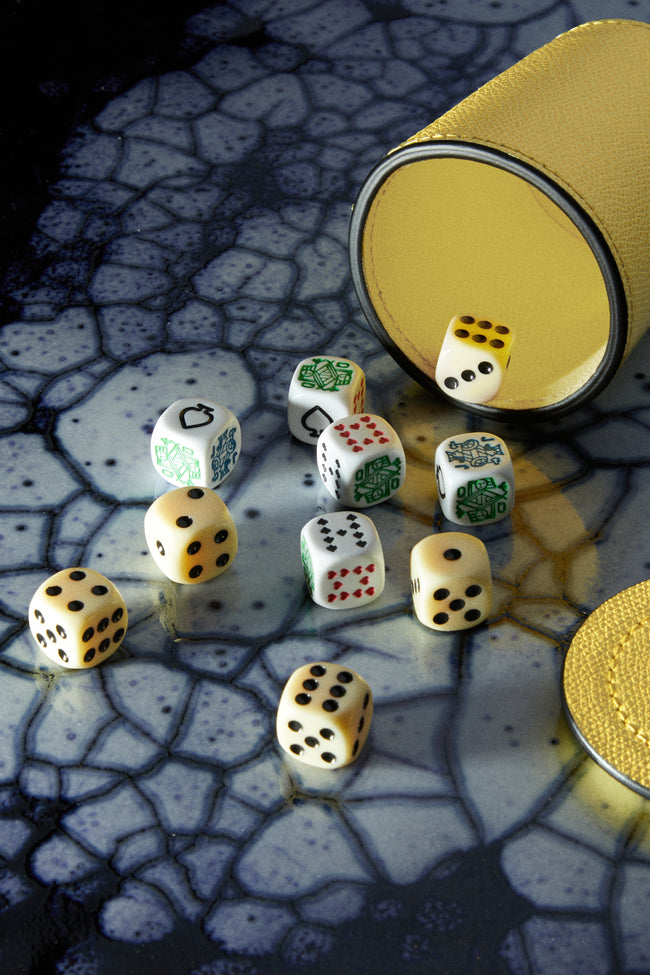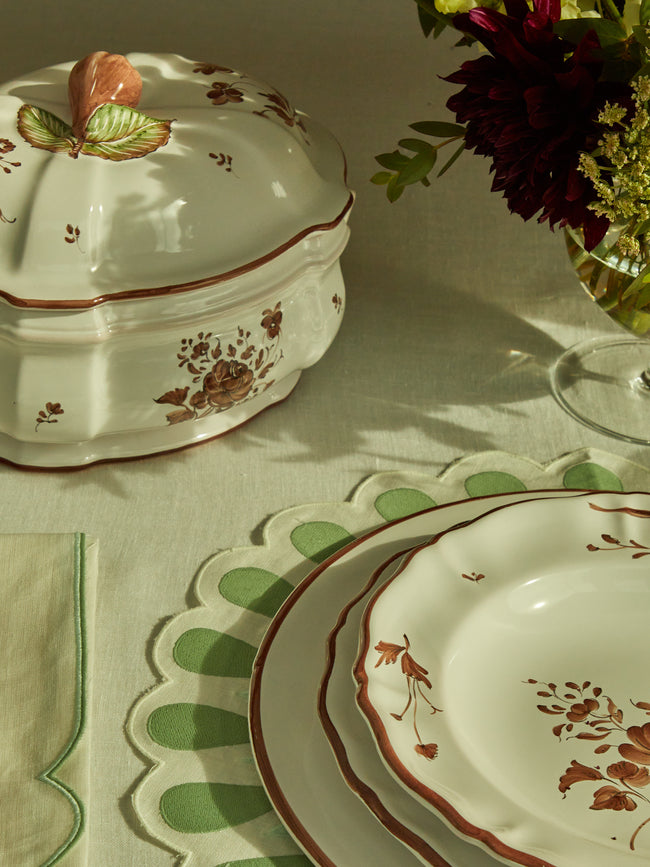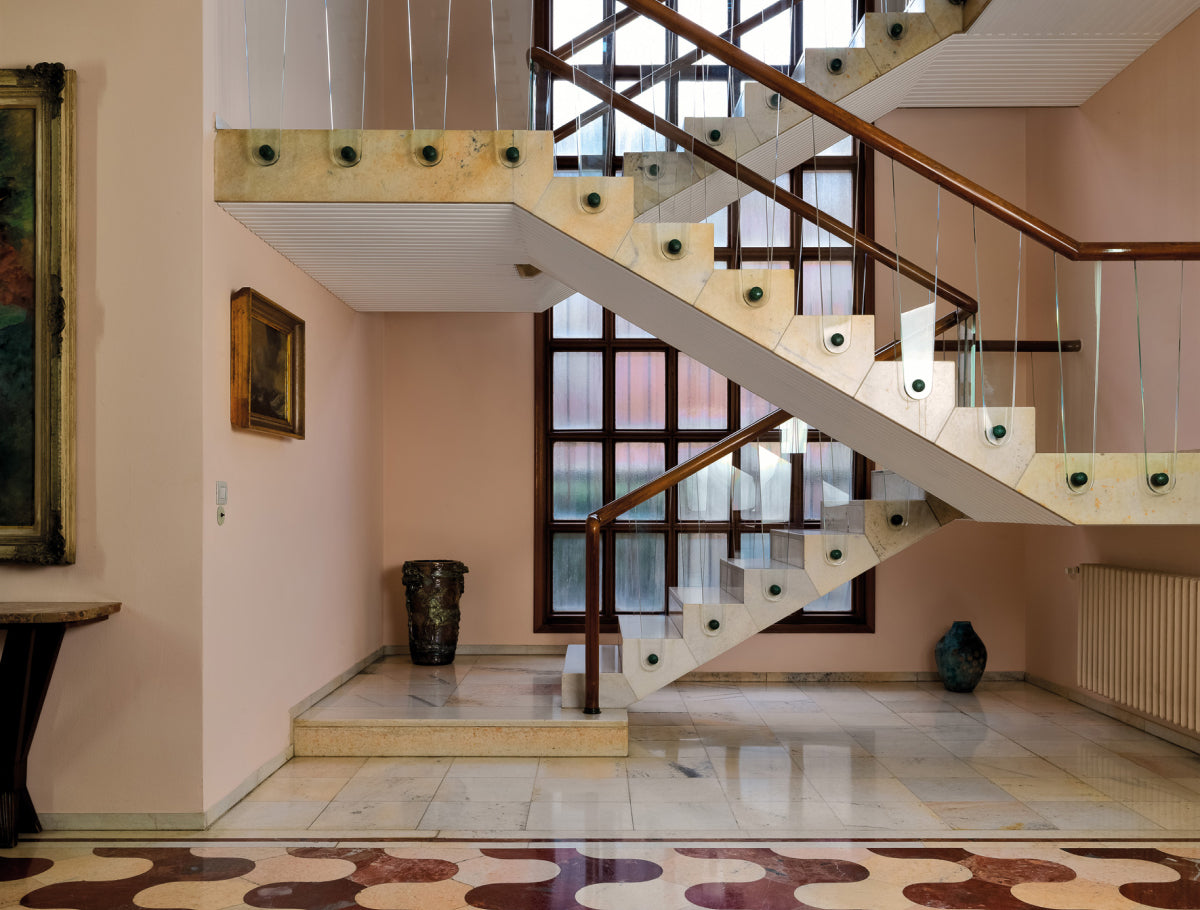

The floating three-tiered staircase — a compelling mix of Candoglia marble steps, walnut banisters and Murano glass panelling (the same variety used for the Duomo in Milan) — sets the material tone for the Villa Borsani, which was completed in 1943 and generations later is still inspiring creators and design aficionados.
This Gesamtkuntswerk, as realised by Osvaldo Borsani, the polymath architect and designer, was a fitting backdrop for ABASK to celebrate its predilection for artistry and the process of creation. Carlo Moretti’s Gemmato crystal vase and Wiener Silber Manufactur’s silver and jade ice bucket recall the detailing of geometric patterns that were applied to the underside of the staircase as well as many of the plaster ceilings.

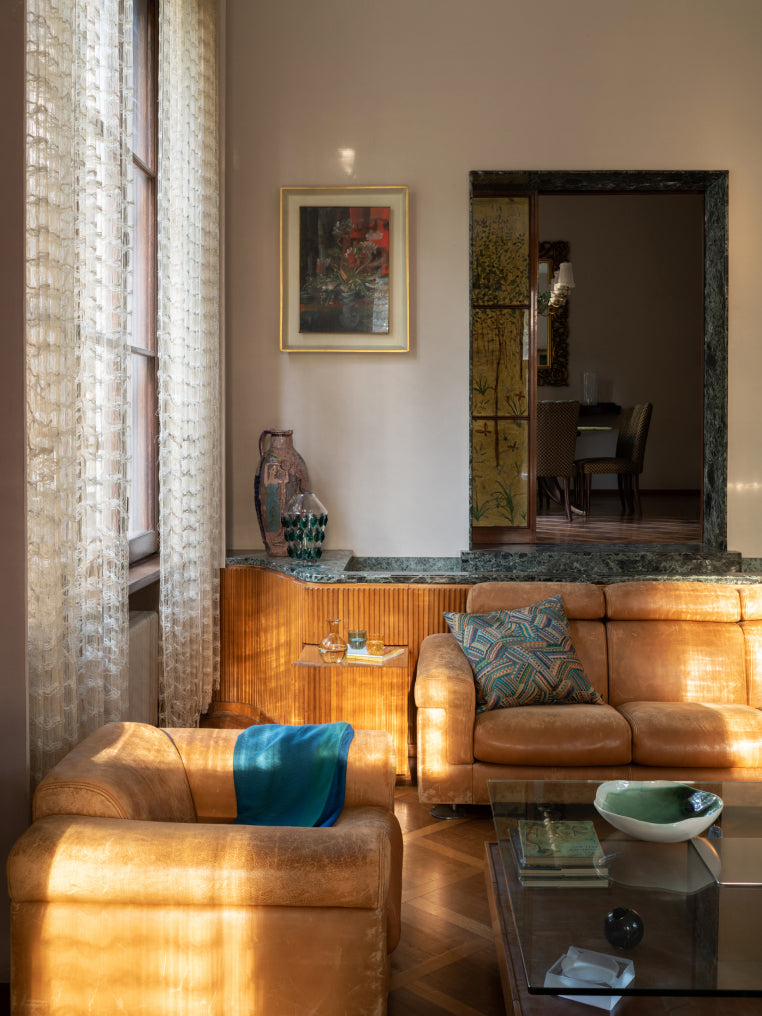
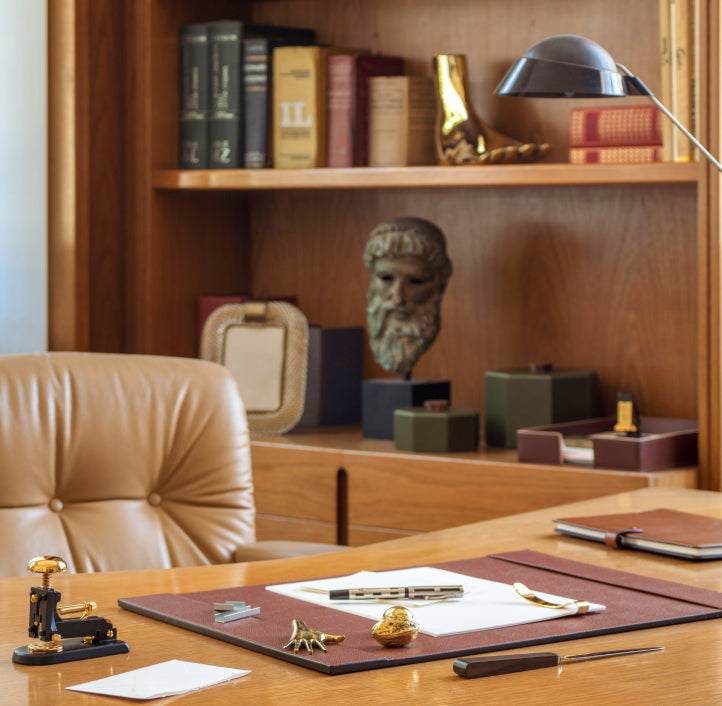
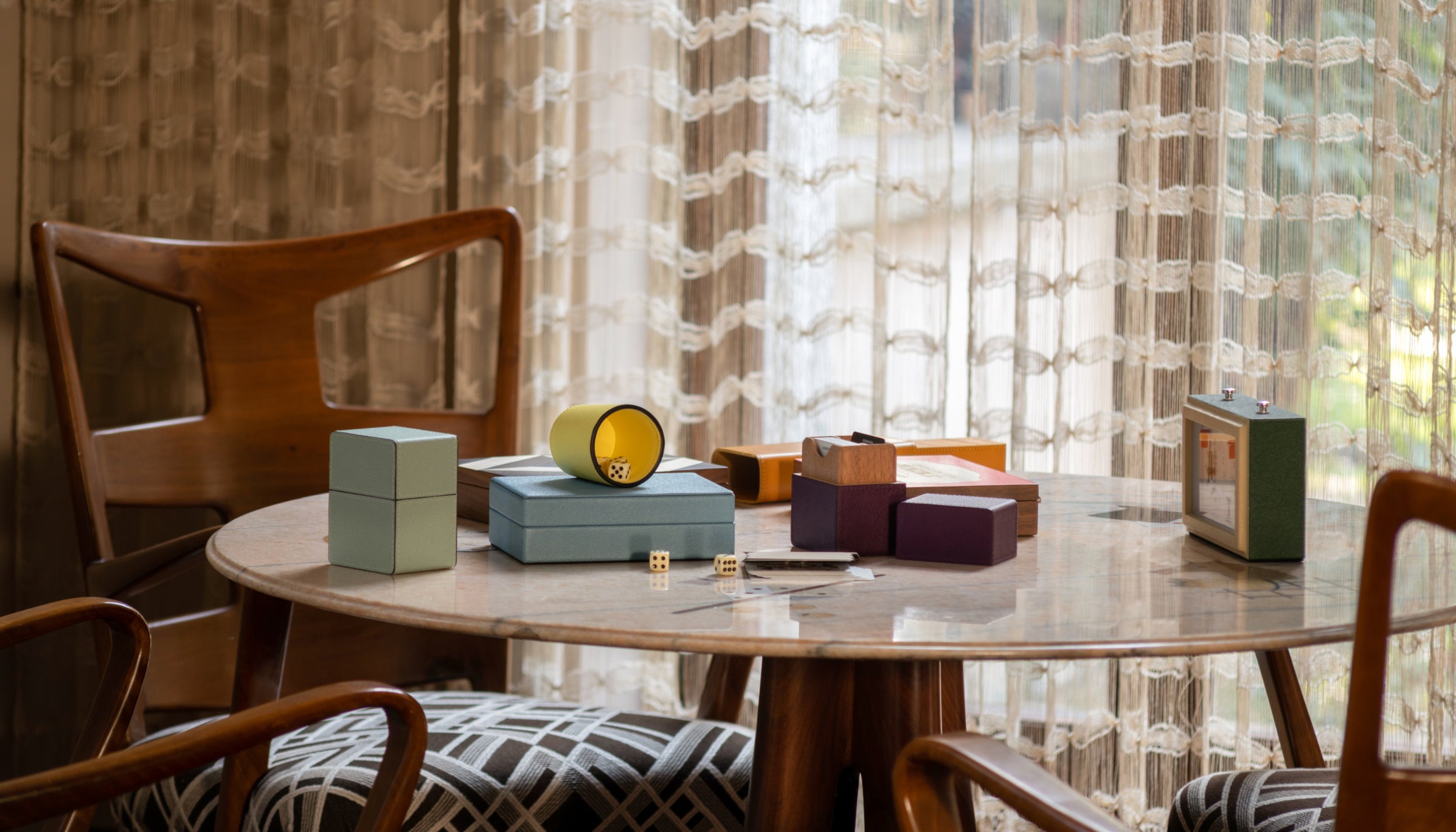
Like Borsani – who commissioned artists such as Fausto Melotti, Guglielmo Ulrich and Agenore Fabbri to create unique pieces, from wall sconces to mosaics – we revel in the joy of collaboration, as pieces by Carl Auböck, NasonMoretti and Poetry & Pottery attest.
As at ABASK, no single style dominates. The villa fuses classical and Modernist elements alongside Art Deco and Baroque flourishes, creating a vernacular that not only narrates Borsani’s own evolution – he produced a prolific portfolio of work spanning six decades in varying styles – but also that of 20th-century Italian design.
But it is his unerring focus on details, echoed in the many houses which he designed, that is particularly notable. At his eponymous home, these speak of his burgeoning fascination with technology: onyx buttons under the dinner table to summon staff, bathroom tiles heated by sunken tubes (rare in Milan in the 1940s), and a panel behind the basement bar decorated with Spilimbergo harlequin figures that slide across to conceal the bartender.
In its heyday, the Villa Borsani was a creative hotspot where ideas were conceived and debated by Borsani and his peers, who included Gio Ponti and Lucio Fontana (who designed the sculptural fireplace that anchors the living room). A century later, his vision remains as powerfully thought-provoking as it is relevant.
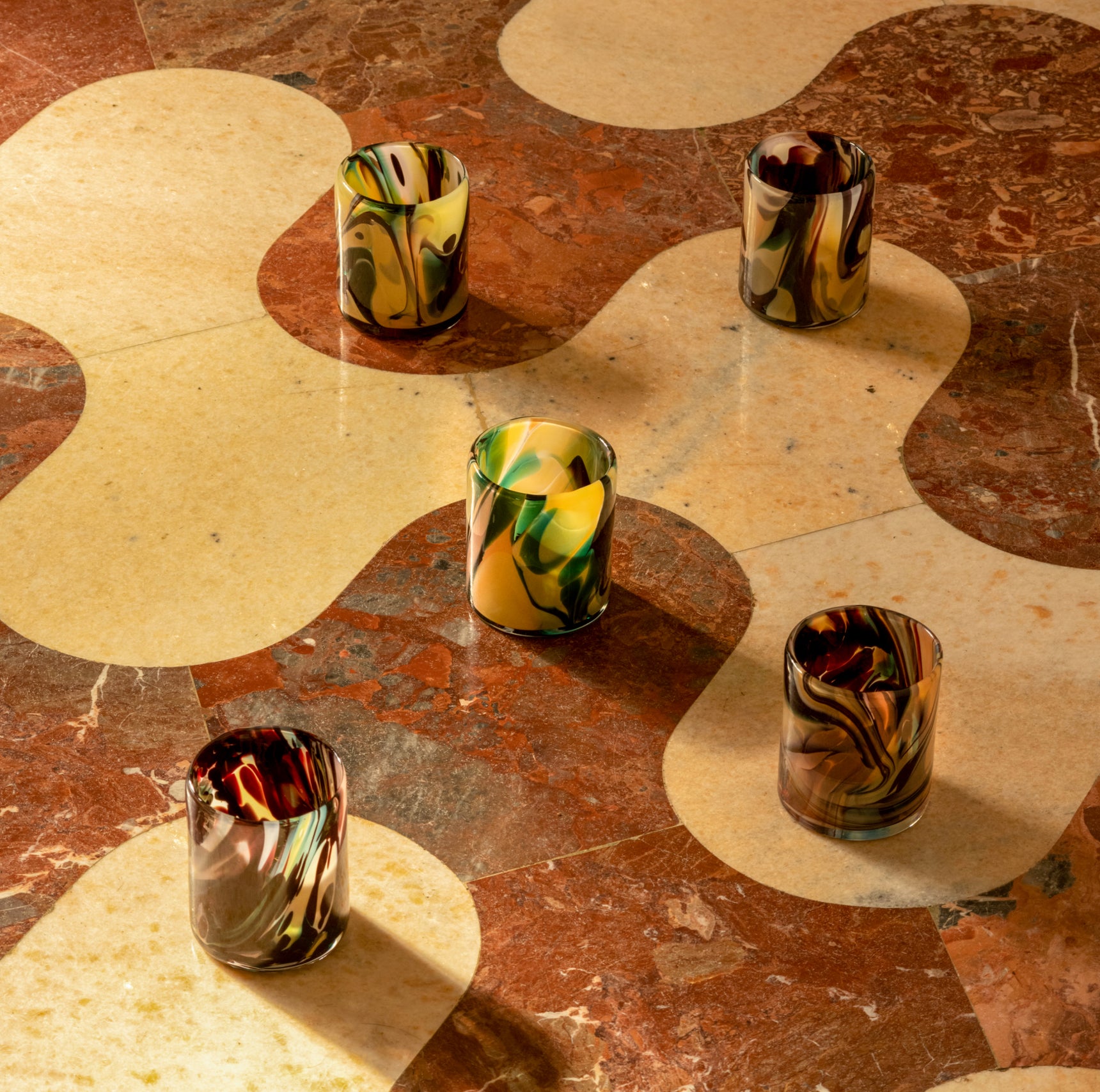
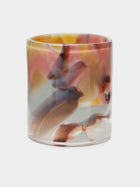
The Glass StudioMarbled Hand-Blown Glass Tumbler
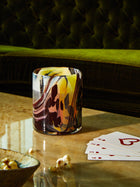
The Glass StudioMarbled Hand-Blown Glass Tumbler
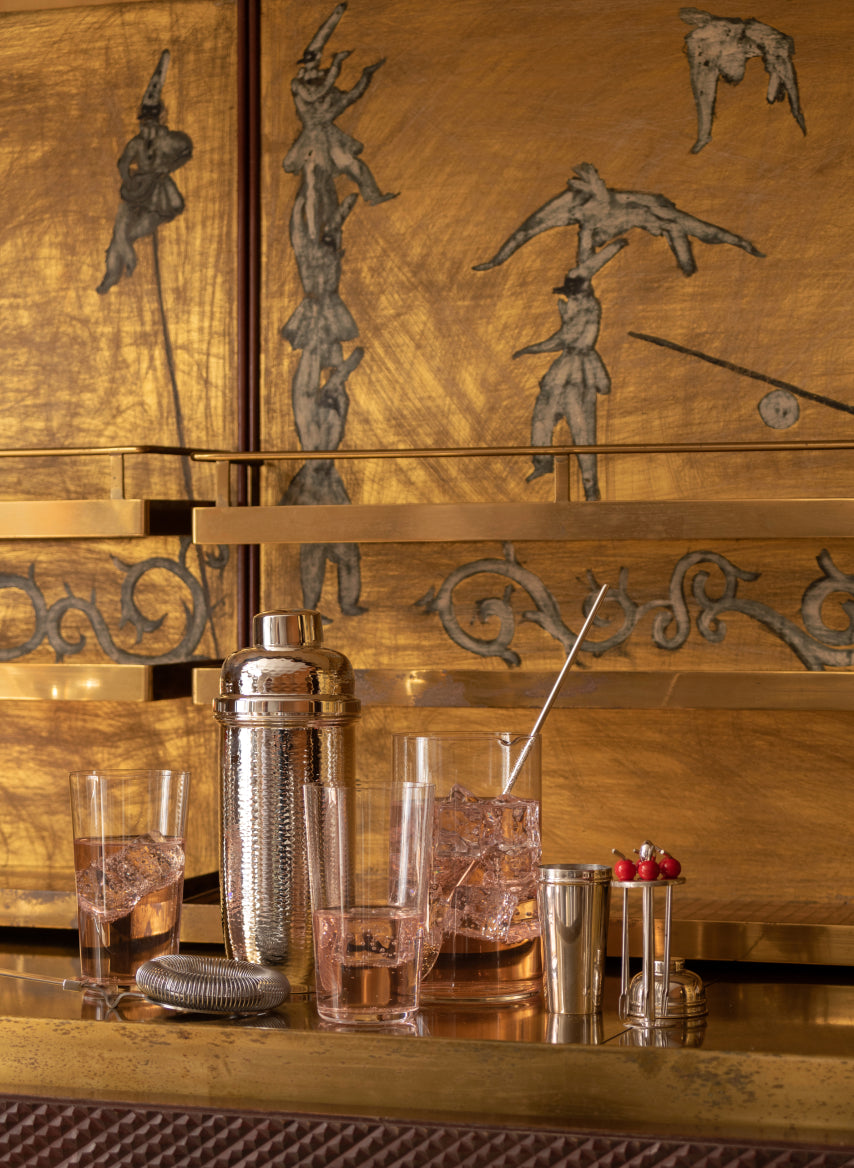
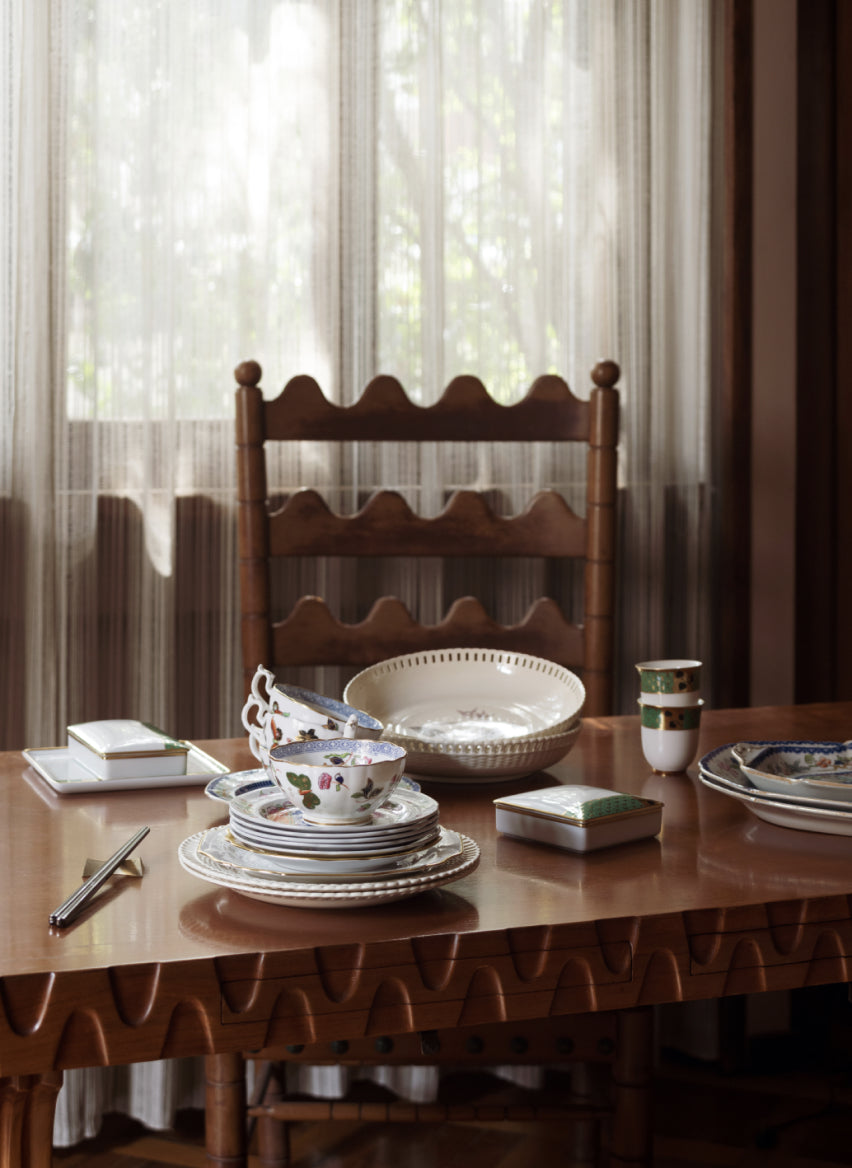
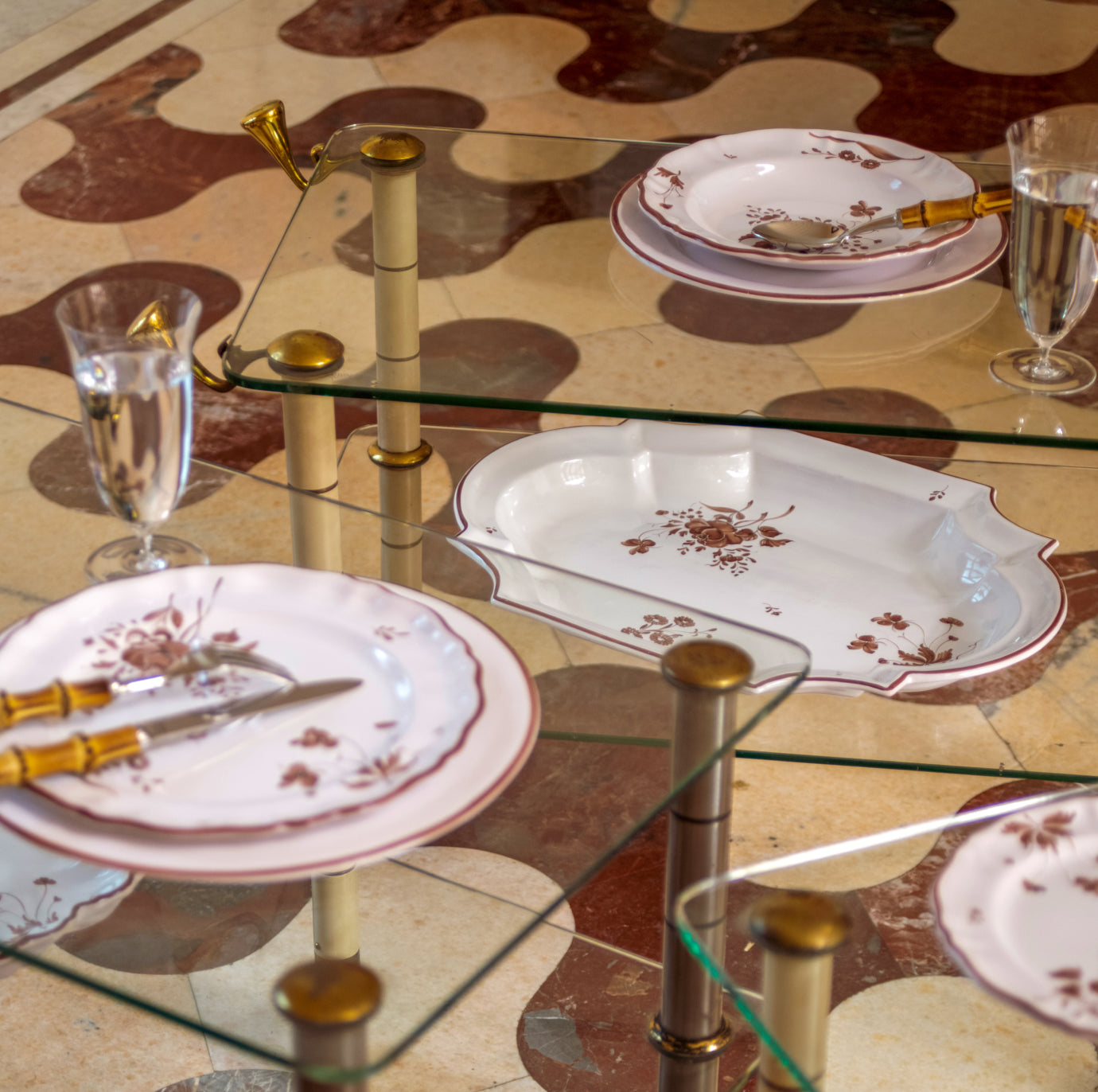

Z.d.GCamaïeu Hand-Painted Ceramic Large Serving Dish

Z.d.GL'Horizon Hand-Painted Ceramic Charger Plates (Set of 2)

Z.d.GCamaïeu Hand-Painted Ceramic Dinner Plates (Set of 2)

Z.d.GCamaïeu Hand-Painted Ceramic Bowls (Set of 2)
Shop the Villa Borsani Edit
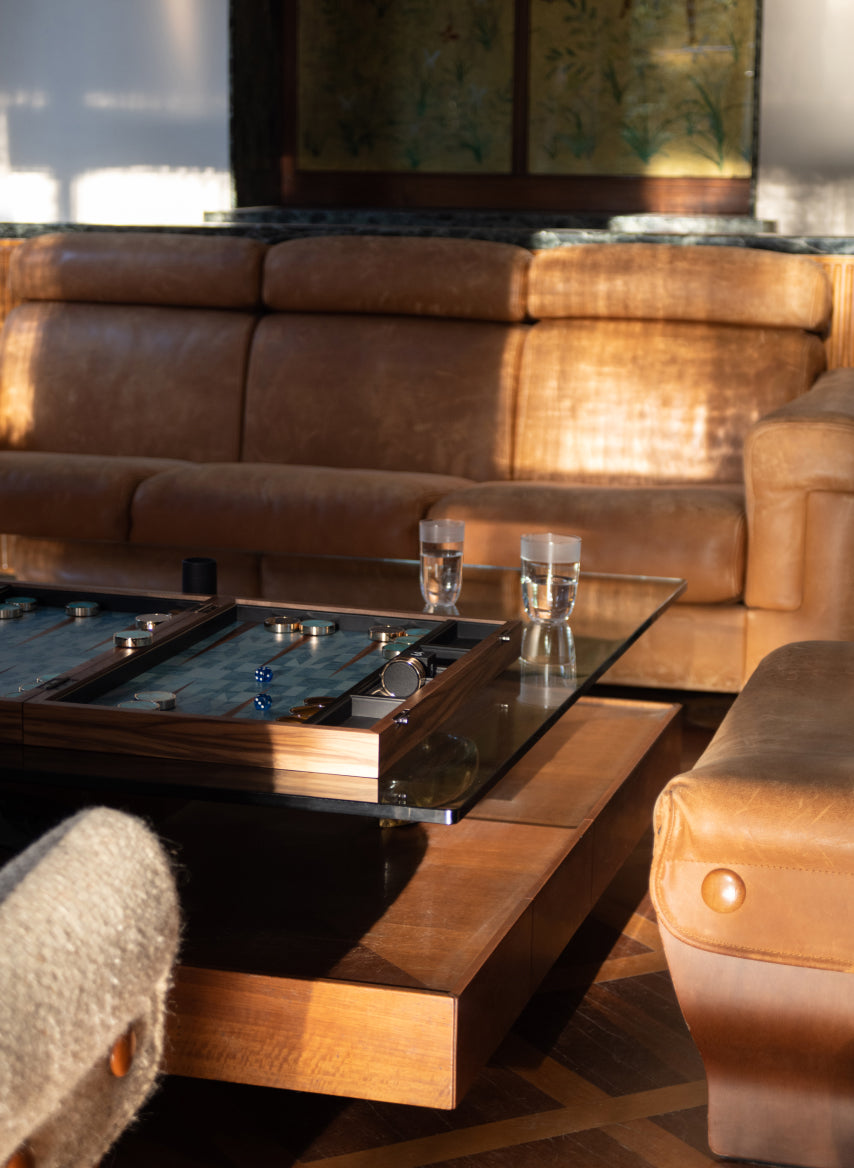

Photographer - Giulio Ghirardi
Art Direction/Styling - Sarah De Beaumont
Opening image by Matteo Piazza
